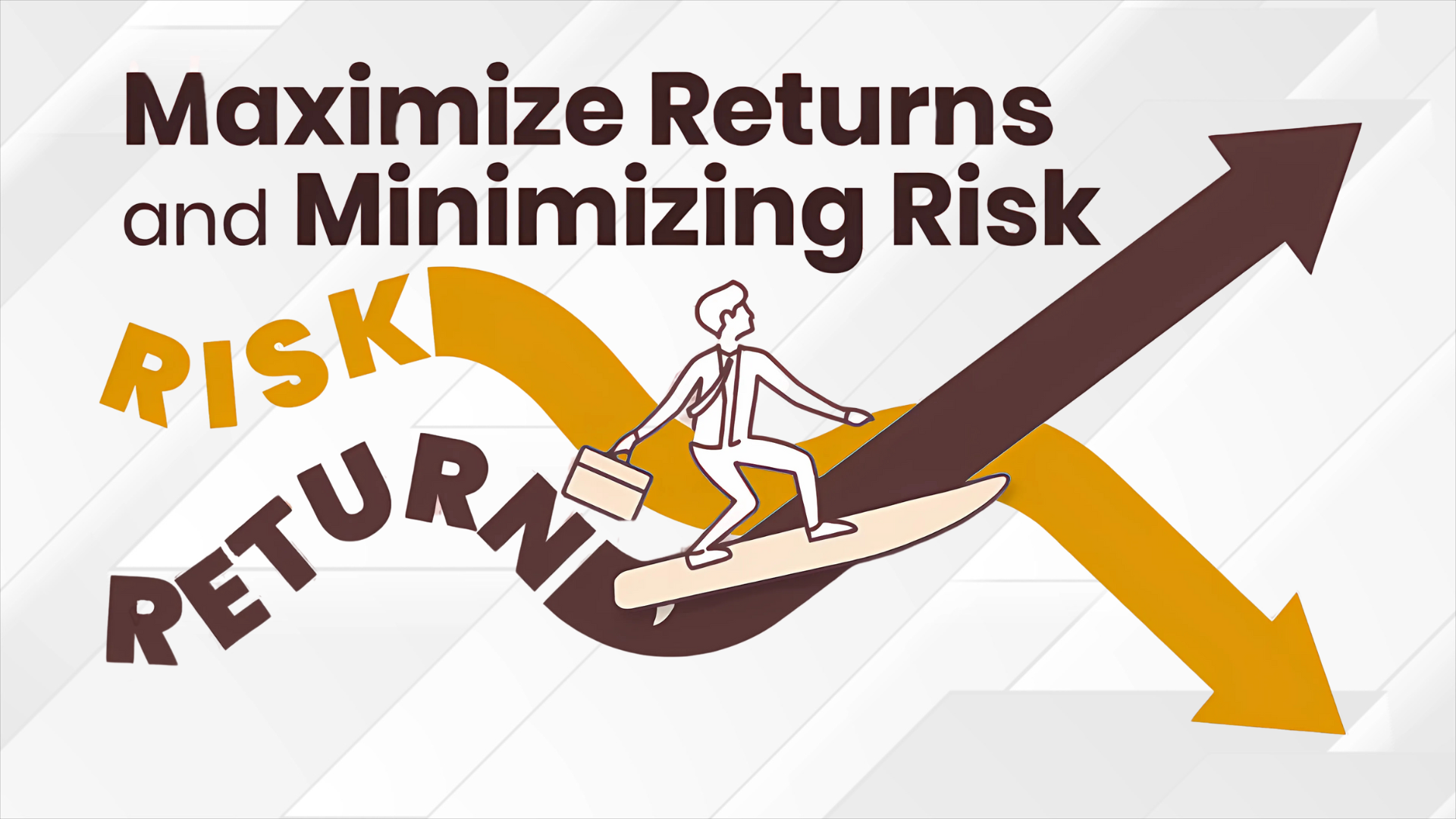
Aggressive Investment Strategies
In the dynamic world of finance, investors seeking maximum returns often embrace aggressive investment strategies. These approaches prioritize high-growth assets, leveraging market volatility to maximize capital appreciation. While inherently risky, these strategies have historically produced outsized gains, particularly in bullish market cycles.
For Dubai-based and global investors, aggressive investment strategies play a critical role in diversifying portfolios and capitalizing on emerging financial trends. This article explores the best aggressive investment strategies, including aggressive growth mutual funds, cryptocurrency investments, and high-growth stock selection.
What Is an Aggressive Investment Strategy?
An aggressive investment strategy is designed to maximize returns by investing in high-risk, high-reward assets. This approach prioritizes capital appreciation over capital preservation, making it ideal for investors with a high risk tolerance and a long-term investment horizon. It is commonly adopted by institutional investors, hedge funds, and high-net-worth individuals looking to generate outsized returns compared to traditional investment strategies.
Aggressive investment strategies rely on dynamic market participation, rapid decision-making, and advanced risk management techniques. Investors leveraging these strategies actively monitor market trends, economic cycles, and asset-specific developments to identify opportunities for exponential growth.
Key Characteristics of Aggressive Investing
To successfully implement an aggressive investment strategy, investors must understand its core principles and features. Below are some of the defining traits of aggressive investing:
1. Emphasis on High-Growth Sectors
Aggressive investors focus on industries and sectors with high growth potential, including:
Technology – Artificial Intelligence (AI), cloud computing, cybersecurity, and automation.
Biotechnology & Healthcare Innovation – Genomics, biotech startups, and pharmaceutical advancements.
Fintech & Digital Payments – Cryptocurrencies, decentralized finance (DeFi), and blockchain-based applications.
Renewable Energy & Electric Vehicles (EVs) – Green hydrogen, solar technology, and battery advancements.
Space Exploration & Aerospace – Private sector space technology companies.
These sectors have shown historical outperformance, making them attractive targets for aggressive investors looking to capitalize on disruptive innovation.
2. High Volatility Tolerance
Aggressive investment strategies embrace market volatility as an opportunity rather than a risk. Unlike conservative investors who may shy away from price swings, aggressive investors leverage market fluctuations to generate profits.
Key volatility-driven strategies include:
Buying the dip: Purchasing assets at discounted prices during market downturns.
Momentum trading: Capitalizing on rapid price movements.
Short-term trading strategies: Engaging in swing trading and day trading.
3. Active Portfolio Management
Aggressive investors often rely on active portfolio management rather than a passive, buy-and-hold approach. This means:
Frequent trading activity to capitalize on short-term gains.
Adjusting allocations dynamically based on market conditions.
Rotating sectors depending on economic cycles and industry performance.
Professional hedge funds and institutional investors use sophisticated algorithmic trading models, AI-driven analytics, and macroeconomic forecasting to refine their active management strategies.
4. Diversification Across Asset Classes
While aggressive investors aim for high returns, they also diversify their portfolios to mitigate risk exposure. A well-structured aggressive portfolio might include:
Equities: High-growth stocks and emerging market opportunities.
Cryptocurrencies & Digital Assets: Bitcoin, Ethereum, and DeFi projects.
Derivatives & Options: Calls, puts, and futures contracts to hedge risk and amplify gains.
Alternative Investments: Private equity, venture capital, and commodities.
Diversification helps balance potential losses in one asset class with gains in another, ensuring that risk-adjusted returns remain optimal.
5. Utilization of Leverage
Leverage is a key tool for aggressive investors, allowing them to amplify their exposure to high-growth opportunities. This includes:
Margin trading: Borrowing capital to increase position size.
Leveraged ETFs & Derivatives: Using financial instruments to gain exposure to market movements without requiring full capital investment.
Options trading: Employing options strategies to speculate on or hedge against market movements.
However, leverage increases risk, and aggressive investors must carefully manage margin requirements and debt exposure to avoid forced liquidations.
Best Aggressive Investment Strategies
1. Investing in Aggressive Growth Mutual Funds
Aggressive growth mutual funds are one of the best ways to participate in high-growth markets while benefiting from professional fund management. These funds cater to investors with a high-risk tolerance, seeking exponential capital appreciation rather than regular income.
What Are Aggressive Growth Mutual Funds?
Aggressive growth mutual funds focus on companies with strong earnings growth potential, often reinvesting profits rather than distributing dividends. These funds tend to invest in sectors with high innovation, such as technology, healthcare, and emerging markets.
Best Aggressive Growth Mutual Funds to Consider
Technology-Focused Mutual Funds – AI, cloud computing, cybersecurity, and quantum computing offer rapid growth potential.
Small-Cap and Mid-Cap Growth Funds – Investing in rapidly scaling companies before they reach large-cap status.
Emerging Market Growth Funds – Exposure to high-growth economies in Asia, Africa, and the Middle East, benefiting from rising consumer demand and infrastructure development.
Biotech and Healthcare Innovation Funds – Investing in groundbreaking medical research, drug development, and personalized medicine.
Green Energy & ESG Funds – Focused on companies driving sustainability, renewable energy, and environmental advancements.
2. Sector Rotation Strategy
Sector rotation is an advanced investment strategy that involves shifting capital between different high-performing sectors based on macroeconomic trends and business cycles. This ensures that capital is allocated where the highest growth potential exists at any given time.
Examples of Sector Rotation Timing:
During Tech Booms – Investing in AI, semiconductors, cloud computing, and fintech.
During Energy Shifts – Moving capital into renewable energy, electric vehicles, and hydrogen fuel technology.
During Inflationary Periods – Allocating funds to commodities, gold, real estate, and inflation-resistant assets.
During Economic Recovery – Investing in travel, hospitality, and discretionary consumer goods.
During Recessionary Periods – Defensive sectors like healthcare, utilities, and essential consumer goods tend to outperform.
3. High-Growth Stock Selection
Selecting individual stocks with exponential growth potential is a hallmark of aggressive investing. Identifying companies before they become mainstream requires thorough market research and strategic selection.
Criteria for High-Growth Stock Selection:
Revenue Growth: Companies with 20%+ annual revenue expansion indicate a strong growth trajectory.
Industry Leadership: Firms disrupting traditional markets and creating new consumer demand.
Innovative Business Models: Businesses leveraging AI, blockchain, automation, and digital transformation.
Strong Earnings Potential: Companies reinvesting profits to drive continued expansion.
Scalability: Businesses with low operating costs that can expand globally with minimal investment.
Competitive Advantage: Companies with unique patents, technology, or market positioning.
4. Cryptocurrency & Blockchain Investments
The cryptocurrency market has become a core high-risk, high-reward investment vehicle for aggressive investors. Blockchain technology continues to disrupt traditional finance, offering unparalleled opportunities.
Crypto Strategies for Aggressive Investors:
Crypto Arbitrage: Exploiting price differences across global exchanges to generate profits.
DeFi Staking & Yield Farming: Generating passive income from decentralized finance protocols, earning returns through lending and liquidity pools.
Investing in Layer-1 & Layer-2 Protocols: Gaining exposure to foundational blockchain ecosystems such as Ethereum, Solana, and Polygon.
NFT & Metaverse Investments: Investing in digital assets, virtual land, and blockchain gaming platforms.
Algorithmic Trading & Bots: Utilizing automated strategies to capitalize on crypto market inefficiencies.
5. Options and Futures Trading
Options and futures trading allow aggressive investors to hedge risks and amplify returns. These derivative instruments provide leverage and strategic positioning for market movements.
Key Options and Futures Strategies:
Call Options: Profit from stock price increases by purchasing the right to buy shares at a predetermined price.
Put Options: Hedge against market downturns by securing the right to sell stocks at a predetermined price.
Futures Contracts: Speculate on asset price movements in commodities, stocks, and cryptocurrencies.
Covered Calls & Protective Puts: Combining options strategies to generate income while mitigating downside risks.
Volatility Trading: Capitalizing on price fluctuations through volatility index (VIX) futures and options.
6. Leveraged & Inverse ETFs
Exchange-traded funds (ETFs) that offer leverage or inverse performance are ideal for aggressive investors looking to amplify their market exposure.
Types of Leveraged & Inverse ETFs:
2x & 3x Leveraged ETFs: Multiply returns by two or three times the underlying asset performance.
Inverse ETFs: Profit from declining markets by tracking the opposite movement of an index.
Sector-Specific Leveraged ETFs: Technology, biotech, and energy-focused funds providing enhanced exposure.
7. Venture Capital & Private Equity
Investing in private companies and startups offers aggressive investors early access to the next wave of industry leaders.
Key Aspects of Private Equity Investing:
Pre-IPO Investments: Buying shares in high-potential startups before they go public.
Early-Stage Venture Capital: Investing in disruptive companies at their seed or Series A funding rounds.
Growth Equity: Providing capital to established startups expanding globally.
Risk Management in Aggressive Investing
1. Investing in Aggressive Growth Mutual Funds
Aggressive growth mutual funds are one of the best ways to participate in high-growth markets while benefiting from professional fund management. These funds cater to investors with a high-risk tolerance, seeking exponential capital appreciation rather than regular income.
What Are Aggressive Growth Mutual Funds?
Aggressive growth mutual funds focus on companies with strong earnings growth potential, often reinvesting profits rather than distributing dividends. These funds tend to invest in sectors with high innovation, such as technology, healthcare, and emerging markets.
Best Aggressive Growth Mutual Funds to Consider
Technology-Focused Mutual Funds – AI, cloud computing, cybersecurity, and quantum computing offer rapid growth potential.
Small-Cap and Mid-Cap Growth Funds – Investing in rapidly scaling companies before they reach large-cap status.
Emerging Market Growth Funds – Exposure to high-growth economies in Asia, Africa, and the Middle East, benefiting from rising consumer demand and infrastructure development.
Biotech and Healthcare Innovation Funds – Investing in groundbreaking medical research, drug development, and personalized medicine.
Green Energy & ESG Funds – Focused on companies driving sustainability, renewable energy, and environmental advancements.
2. Sector Rotation Strategy
Sector rotation is an advanced investment strategy that involves shifting capital between different high-performing sectors based on macroeconomic trends and business cycles. This ensures that capital is allocated where the highest growth potential exists at any given time.
Examples of Sector Rotation Timing:
During Tech Booms – Investing in AI, semiconductors, cloud computing, and fintech.
During Energy Shifts – Moving capital into renewable energy, electric vehicles, and hydrogen fuel technology.
During Inflationary Periods – Allocating funds to commodities, gold, real estate, and inflation-resistant assets.
During Economic Recovery – Investing in travel, hospitality, and discretionary consumer goods.
During Recessionary Periods – Defensive sectors like healthcare, utilities, and essential consumer goods tend to outperform.
3. High-Growth Stock Selection
Selecting individual stocks with exponential growth potential is a hallmark of aggressive investing. Identifying companies before they become mainstream requires thorough market research and strategic selection.
Criteria for High-Growth Stock Selection:
Revenue Growth: Companies with 20%+ annual revenue expansion indicate a strong growth trajectory.
Industry Leadership: Firms disrupting traditional markets and creating new consumer demand.
Innovative Business Models: Businesses leveraging AI, blockchain, automation, and digital transformation.
Strong Earnings Potential: Companies reinvesting profits to drive continued expansion.
Scalability: Businesses with low operating costs that can expand globally with minimal investment.
Competitive Advantage: Companies with unique patents, technology, or market positioning.
4. Cryptocurrency & Blockchain Investments
The cryptocurrency market has become a core high-risk, high-reward investment vehicle for aggressive investors. Blockchain technology continues to disrupt traditional finance, offering unparalleled opportunities.
Crypto Strategies for Aggressive Investors:
Crypto Arbitrage: Exploiting price differences across global exchanges to generate profits.
DeFi Staking & Yield Farming: Generating passive income from decentralized finance protocols, earning returns through lending and liquidity pools.
Investing in Layer-1 & Layer-2 Protocols: Gaining exposure to foundational blockchain ecosystems such as Ethereum, Solana, and Polygon.
NFT & Metaverse Investments: Investing in digital assets, virtual land, and blockchain gaming platforms.
Algorithmic Trading & Bots: Utilizing automated strategies to capitalize on crypto market inefficiencies.
5. Options and Futures Trading
Options and futures trading allow aggressive investors to hedge risks and amplify returns. These derivative instruments provide leverage and strategic positioning for market movements.
Key Options and Futures Strategies:
Call Options: Profit from stock price increases by purchasing the right to buy shares at a predetermined price.
Put Options: Hedge against market downturns by securing the right to sell stocks at a predetermined price.
Futures Contracts: Speculate on asset price movements in commodities, stocks, and cryptocurrencies.
Covered Calls & Protective Puts: Combining options strategies to generate income while mitigating downside risks.
Volatility Trading: Capitalizing on price fluctuations through volatility index (VIX) futures and options.
6. Leveraged & Inverse ETFs
Exchange-traded funds (ETFs) that offer leverage or inverse performance are ideal for aggressive investors looking to amplify their market exposure.
Types of Leveraged & Inverse ETFs:
2x & 3x Leveraged ETFs: Multiply returns by two or three times the underlying asset performance.
Inverse ETFs: Profit from declining markets by tracking the opposite movement of an index.
Sector-Specific Leveraged ETFs: Technology, biotech, and energy-focused funds providing enhanced exposure.
7. Venture Capital & Private Equity
Investing in private companies and startups offers aggressive investors early access to the next wave of industry leaders.
Key Aspects of Private Equity Investing:
Pre-IPO Investments: Buying shares in high-potential startups before they go public.
Early-Stage Venture Capital: Investing in disruptive companies at their seed or Series A funding rounds.
Growth Equity: Providing capital to established startups expanding globally.
Risk Management in Aggressive Investing
While high-return strategies are appealing, risk management is crucial. Here’s how top investors control downside risks:
1. Diversification Strategy
Growth Stocks (40%) – Focused on high-revenue expansion firms.
Aggressive Growth Mutual Funds (30%) – Actively managed fund exposure.
Cryptocurrency & Alternative Investments (20%) – Digital assets and private equity.
Cash & Low-Risk Bonds (10%) – Liquidity buffer for market downturns.
2. Stop-Loss and Exit Strategies
Setting stop-loss orders at 10-20% below entry price prevents excessive losses.
Regular portfolio rebalancing to lock in gains and manage risk exposure.
Exit planning to shift funds from high-risk assets to stable investments during market downturns.
3. Leveraging Options for Risk Hedging
Covered Calls: Generating income while maintaining stock holdings.
Protective Puts: Hedging against potential downturns in a stock’s value.
Collar Strategies: Combining calls and puts to limit both gains and losses.
Straddle & Strangle Strategies: Profiting from volatility in aggressive market conditions.
Aggressive Investing in Dubai & Global Markets
Dubai has positioned itself as a global financial hub, offering unique investment opportunities for aggressive investors.
Why Dubai-Based Investors Should Consider Aggressive Strategies
Tax Advantages – Dubai offers a tax-friendly investment environment.
Access to Global Markets – Direct investments in US, European, and Asian stock exchanges.
Fintech & AI Boom – Dubai is at the forefront of fintech, blockchain, and AI innovation.
How Radiant Global Fund Supports Aggressive Investors
As a Mauritius-based fund serving Dubai and global investors, Radiant Global Fund offers access to:
Top Aggressive Growth Mutual Funds
Alternative Investment Opportunities
Expert Portfolio Management for High-Risk Strategies
Aggressive investing is a high-risk, high-reward approach that demands market knowledge, risk management, and strategic execution. Whether through aggressive growth mutual funds, cryptocurrency, or high-growth stock selection, investors have multiple ways to capitalize on market opportunities.
Dubai-based and global investors should explore top aggressive growth mutual funds and alternative investments to enhance their portfolios.
For expert guidance and access to the best aggressive investment opportunities, visit Radiant Global Fund today.






